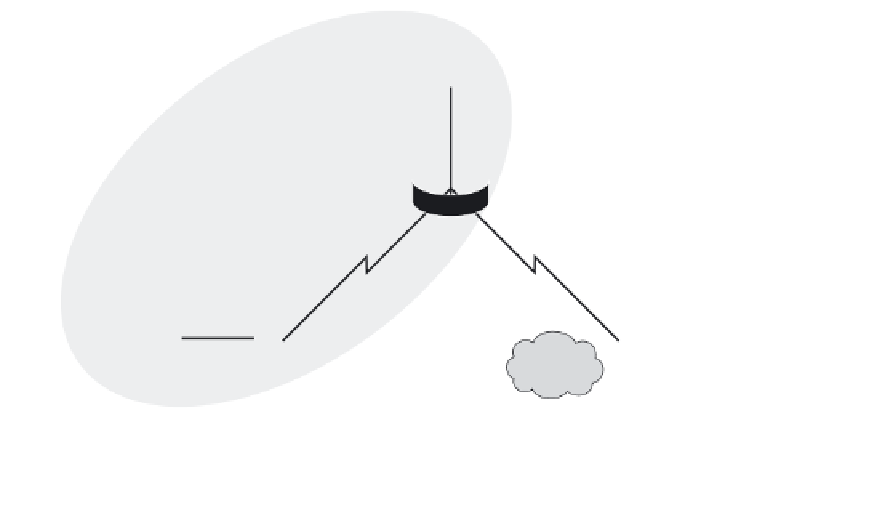Information Technology Reference
In-Depth Information
Scenario C: Running RIPv1 on a Stub Network
In this scenario, you will modify Scenario B to only run RIP between R1 and R2. Scenario C is a typ-
ical configuration for most companies connecting a stub network to a central headquarters router or an
ISP. Typically, a company runs a dynamic routing protocol (RIPv1 in our case) within the local net-
work but finds it unnecessary to run a dynamic routing protocol between the company's gateway
router and the ISP. For example, colleges with multiple campuses often run a dynamic routing proto-
col between campuses but use default routing to the ISP for access to the Internet. In some cases,
remote campuses can even use default routing to the main campus, choosing to use dynamic routing
only locally. Refer to Figure 5-12 for the discussion of Scenario C.
Figure 5-12
Topology Diagram for Scenario C
172.30.3.0/24
PC2
Fa0/0
R2
S0/0/1
DCE
RIPv1
S0/0/0
192.168.4.8/30
172.30.2.0/24
Default
Route
Static
Route
172.30.1.0/24
192.168.5.0/24
S0/0/0
DCE
S0/0/1
Fa0/0
Fa0/0
R1
R3
Internet
PC1
PC3
To keep our example simple, for Scenario C, we left the addressing intact from Scenario B. Assume
that R3 is the ISP for Company XYZ, which consists of the R1 and R2 routers using the
172.30.0.0/16 major network, subnetted with a /24 mask. Company XYZ is a stub network, meaning
that there is only one way in and one way out of the 172.30.0.0/16 network: in through R2 (the gate-
way router) and out through R3 (the ISP). It doesn't make sense for R2 to send R3 RIP updates for
the 172.30.0.0 network every 30 seconds, because R3 has no other way to get to 172.30.0.0 except
through R2. It makes more sense for R3 to have a static route configured for the 172.30.0.0/16 net-
work pointing to R2.
How about traffic from Company XYZ toward the Internet? It makes no sense for R3 to send over
120,000 summarized Internet routes to R2. All R2 needs to know is that if a packet is not destined for
a host on the 172.30.0.0 network, it should send the packet to the ISP, R3. This is the same for all
other Company XYZ routers (only R1 in our case). They should send all traffic not destined for the
172.30.0.0 network to R2. R2 would then forward the traffic to R3.






















































































































































































































































































































































































































































































































































